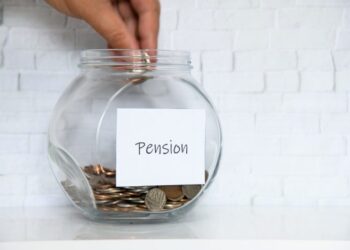Pensions make up 42 per cent of the UK’s £12.8 trillion total private wealth, outstripping property, which represents 36 per cent of the nation’s assets.
Figures from the Office for National Statistics (ONS) for the period beteen July 2014 and June 2016 show a massive divide between the wealthiest and the poorest, with the top 10 per cent of housholds owning five times the collective wealth of the bottom 50 per cent. To be in the top 10 per cent you needed to have household wealth of £1,208,300 or more.
Pensions were the biggest component of wealth, at £5.3 trillion, up from £4.4 trillion for the period 2012-14. They were also the main driver of growth, responsible for 53 per cent of the overall increase in wealth.
In 2012-2014, they made up 40 per cent of wealth, while property was responsible for 35 per cent. Financial wealth such as savings and investments represents 14 per cent of all wealth while physical wealth such as jewellery, cars and other assets represents 10 per cent. In 2014-16 property represented 36 per cent of wealth while financial wealth stood at 13 per cent.
But the vast majority of pension wealth falls to either those with pension in payment, who account for 47 per cent of pension wealth, or those currently in occupational defined benefit schemes, who represent 32 per cent of pensions wealth. The amount of pension wealth attributed to those in accumulating pension savings in current defined contribution schemes is just 4 per cent of all pension wealth.
The figures showed that 55 per cent of people are not contributing to a pension at all. The figures show 66 per cent of employees were actively contributing to a private pension scheme compared with 25 per cent of self-employed – with median current pension wealth for employees being £33,000 compared with £21,000 for the self-employed.
Hargreaves Lansdown senior pension analyst Nathan Long: “Pensions cemented their position as the most significant contributor to UK household wealth. Whilst the government would love this to be a result of their programme to get people automatically saving for their retirement through the workplace, the amounts being saved are so small at present that the impact to these figures will be minimal. The chief contributor is actually a jump in the cost of providing guaranteed retirement income, with the knock on being that the notional value of any final salary pensions and pensions in payment were sent soaring. Those without the benefit of a final salary scheme or pension in payment still benefited, with the average managed pension fund rising nearly 9% during the period.
A huge gulf remains between employees who are swept up automatically into pension saving and the self-employed who aren’t. There is a lot resting on the Government’s ability to encourage technology solutions to nudge and cajole the self-employed into saving more for their life after work.”





